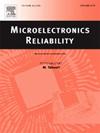TXV 结构材料力学参数的等效建模和模型试验验证方法研究
IF 1.6
4区 工程技术
Q3 ENGINEERING, ELECTRICAL & ELECTRONIC
引用次数: 0
摘要
针对 TXV(穿 X 通路)结构模拟过程中遇到的多尺度网格划分和计算效率低等问题,提出了 TXV 结构材料力学参数的等效建模方法。通过对硅通孔 (TSV)、模通孔 (TMV) 和玻璃通孔 (TGV) 三种 TXV 结构的最小元素进行力学模拟,得到了 TXV 结构在不同基底材料、通孔直径、通孔深度和通孔间距下的各向异性材料力学参数。基于仿真数据和 BP(反向传播)神经网络算法,建立了 TXV 结构的材料力学参数等效模型。基于四点弯曲法,对实际 TSV 结构进行了理论计算和仿真分析,并通过力和应变测量系统测试和验证了等效模型的准确性。仿真和测试结果表明,基于 BP 算法的等效模型预测精度较高,TSV、TMV 和 TGV 结构训练样本的预测误差分别小于 0.467 %、3.571 % 和 1.303 %,测试样本的预测误差分别小于 0.424 %、3.130 % 和 1.444 %。经过等效和简化后,仿真模型的网格划分和计算效率显著提高,网格元素数量减少了 95.79 %,计算时间缩短了 94.17 %。基于等效模型的仿真精度高,简化模型与完整模型的应变仿真误差为 0.24 %,简化模型的应变仿真结果与实际测量结果的误差为 2.81 %。本文章由计算机程序翻译,如有差异,请以英文原文为准。
Research on equivalent modeling and model testing verification methods for material mechanics parameters of TXV structure
Aiming at the problems of multi-scale mesh division and low computational efficiency encountered during TXV (through X via) structural simulation, an equivalent modeling method for material mechanics parameters of TXV structure is proposed. By conducting mechanics simulations on the minimum elements of three TXV structures, namely through silicon via (TSV), through mold via (TMV) and through glass via (TGV), the anisotropic material mechanics parameters of TXV structures corresponding to different substrate materials, via diameters, via depths and via pitches are obtained. Based on simulation data and BP (back propagation) neural network algorithm, the material mechanics parameter equivalence models of TXV structures are established. Based on the four-point bending method, the theoretical calculation and simulation analysis of the actual TSV structure are carried out, and the accuracy of the equivalent model is tested and verified by the force and strain measurement systems. The simulation and test results show that the prediction accuracy of equivalent models based on BP algorithm is high, and the prediction errors for training samples of TSV, TMV and TGV structures are less than 0.467 %, 3.571 % and 1.303 %, respectively, and the prediction errors for testing samples are less than 0.424 %, 3.130 % and 1.444 %, respectively. After equivalence and simplification, the mesh division and computational efficiency of the simulation model are improved significantly, the number of mesh elements is reduced by 95.79 %, and the calculation time is shortened by 94.17 %. The simulation accuracy based on the equivalent model is high, the strain simulation error between the simplified model and the complete model is 0.24 %, and the error between the strain simulation result of the simplified model and the actual measurement result is 2.81 %.
求助全文
通过发布文献求助,成功后即可免费获取论文全文。
去求助
来源期刊

Microelectronics Reliability
工程技术-工程:电子与电气
CiteScore
3.30
自引率
12.50%
发文量
342
审稿时长
68 days
期刊介绍:
Microelectronics Reliability, is dedicated to disseminating the latest research results and related information on the reliability of microelectronic devices, circuits and systems, from materials, process and manufacturing, to design, testing and operation. The coverage of the journal includes the following topics: measurement, understanding and analysis; evaluation and prediction; modelling and simulation; methodologies and mitigation. Papers which combine reliability with other important areas of microelectronics engineering, such as design, fabrication, integration, testing, and field operation will also be welcome, and practical papers reporting case studies in the field and specific application domains are particularly encouraged.
Most accepted papers will be published as Research Papers, describing significant advances and completed work. Papers reviewing important developing topics of general interest may be accepted for publication as Review Papers. Urgent communications of a more preliminary nature and short reports on completed practical work of current interest may be considered for publication as Research Notes. All contributions are subject to peer review by leading experts in the field.
 求助内容:
求助内容: 应助结果提醒方式:
应助结果提醒方式:


